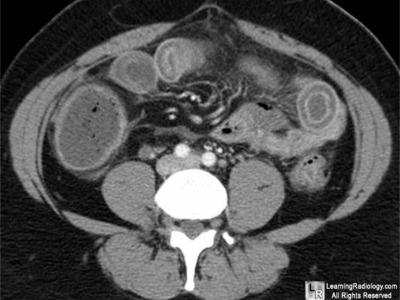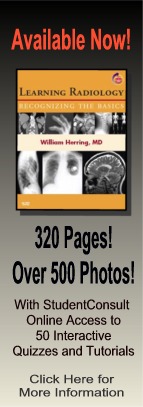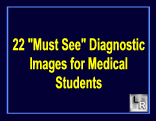| Cardiac | |
|---|---|
| GI | |
| Bone | |
| GU | |
| Neuro | |
| Peds | |
| Faculty | |
| Student | |
| Quizzes | |
| Image DDX | |
| Mobile | |
| |
Misc |
| Videocasts | |
LearningRadiology Imaging Signs
on Twitter
![]()
Follow us on
What sign is depicted on this image?
- 45 year-old with abdominal pain

Contrast-enhanced axial CT of lower abdomen
1. Small bowel feces sign
2. Misty mesentery sign
3. Accordion sign
4. Duplicated ureter sign
5. Target sign
Additional Images - None
![]()
Additional Images
.
None
![]()
Answer:
.
5. Target Sign
.
.
More (Click Discussion Tab)
Target Sign
General Considerations
- Three concentric circles formed by the layers of the bowel wall in inflammatory disease of the bowel and seen on contrast-enhanced CT
- The inner and outer rings of high attenuation are presumed to represent hyperemia of the mucosa and muscularis propia and/or serosa, respectively
- The middle low attenuation ruing is presumed to represent submucosal edema which produces thickening of the bowel wall
- Best seen during late arterial, early venous phase
.
This Week
45 year-old with abdominal pain |
This podcast reviews the thoracic imaging manifestations of sarcoid, its diagnosis, staging and prognosis. There is a mini-quiz at the end. |
Review descriptions of key imaging signs in the shorthand of Tweets by subscribing to this new LearningRadiology Twitter feed for your computer or cell phone
|
Some of the fundamentals of interpreting chest images |
The top diagnostic imaging diagnoses that all medical students should recognize according to the Alliance of Medical Student Educators in Radiology |
Recognizing normal and key abnormal intestinal gas patterns, free air and abdominal calcifications |
Recognizing the parameters that define a good chest x-ray; avoiding common pitfalls |
How to recognize the most common arthritides |
| LearningRadiology.com |
is an award-winning educational website aimed primarily at medical students and radiology residents-in-training, containing lectures, handouts, images, Cases of the Week, archives of cases, quizzes, flashcards of differential diagnoses and “most commons” lists, primarily in the areas of chest, GI, GU cardiac, bone and neuroradiology. |


